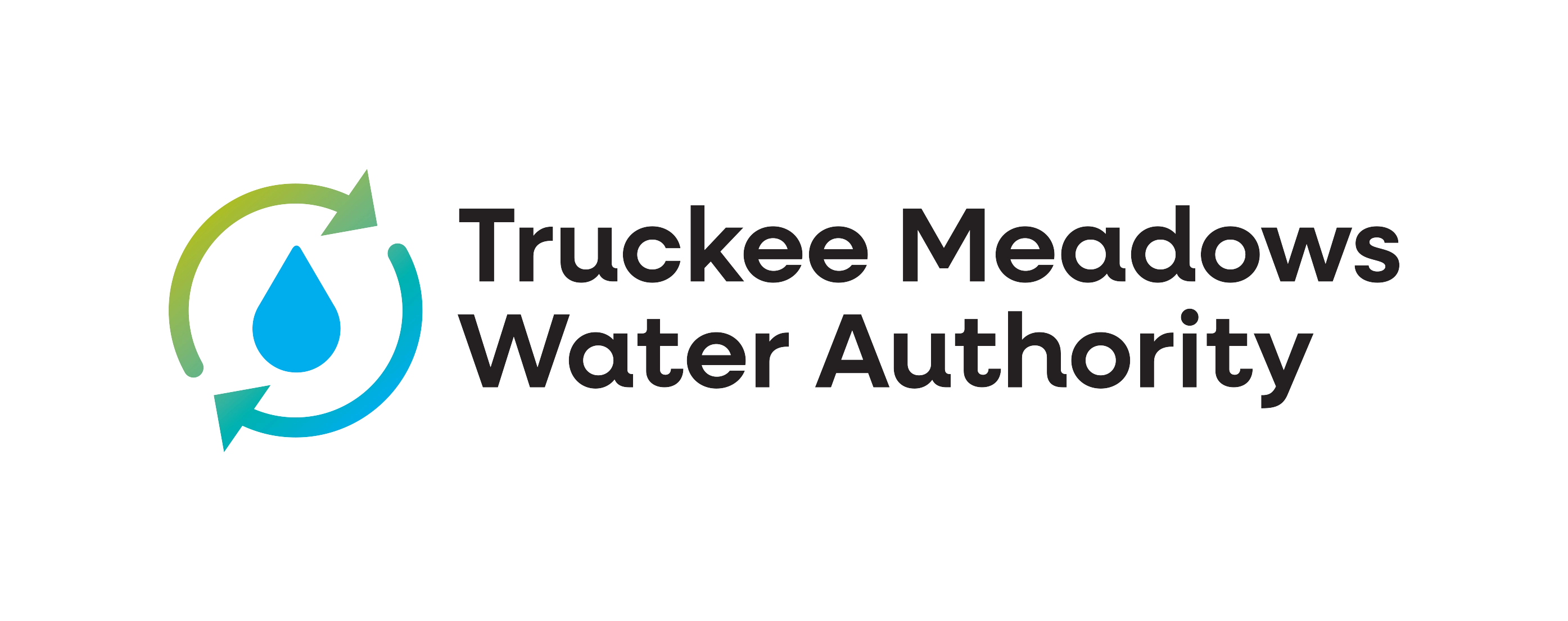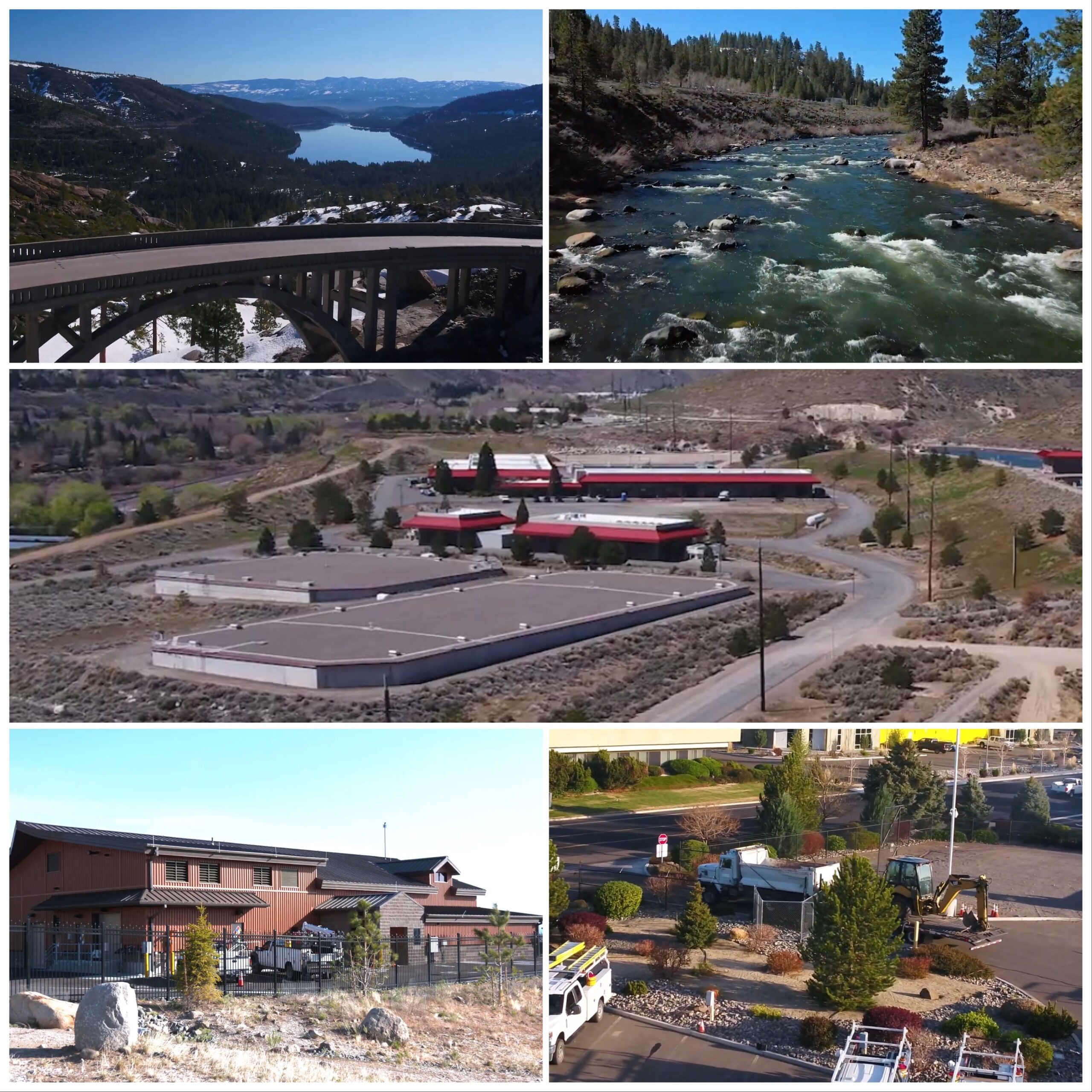 Nevada is the driest state in the Union, and we depend on winter storms to keep Lake Tahoe full and the Truckee River flowing. But snowpack and river flows represent just part of the story when it comes to TMWA’s water supply.
Nevada is the driest state in the Union, and we depend on winter storms to keep Lake Tahoe full and the Truckee River flowing. But snowpack and river flows represent just part of the story when it comes to TMWA’s water supply.
Click or scroll on any drought-resiliency topic:
- A Robust Water System.
- Responsive River Operation.
- Adaptive Resource Management.
- Commitment to Conservation.
- Exploring New Sources and Storage Options.
- Examining Climate Change.
A Robust Water System
Follow the water system from Tahoe to the Tap:
TMWA uses anywhere from 3-9% of the Truckee River in a year. In addition, TMWA stores substantial drought reserves in six upstream reservoirs. This storage sets TMWA apart from other regions—not all river systems have such a well-developed and redundant network of water-storage reservoirs. While four of these reservoirs hold water for multiple downstream water users, TMWA owns 100% of the storage in two of them: Donner and Independence Lakes.
Responsive River Operation
When drought is forecast, water allotted to TMWA that would normally be required to flow downstream can be retained in upstream reservoirs for use at a later date. In these circumstances, TMWA is able to divert more spring runoff water into storage.
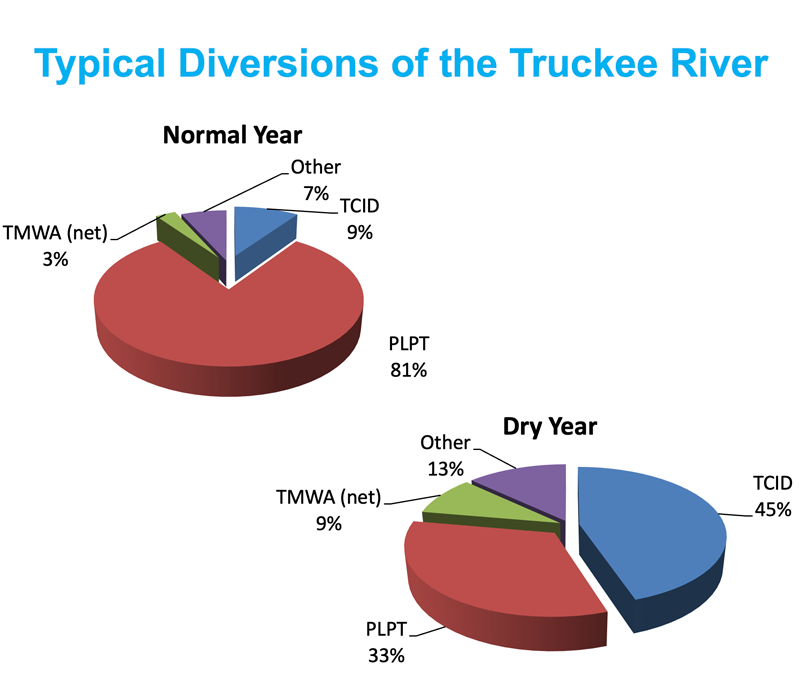
If drought continues, water saved can be carried over into the following year. For example, since this is the third consecutive drought year for our region, TMWA could carry over storage from last year and continue to add storage from this season’s snowmelt.
As a result, this summer TMWA had over 69,000 acre-feet of drought reserves in storage in various upstream reservoirs. This was possible due to a new operating agreement on the Truckee River that went into effect in 2015, the Truckee River Operating Agreement or TROA. TROA has enabled TMWA to more than double the amount of drought reserves it has in place at any given time.
Adaptive Resource Management
In addition to reservoirs and lakes, TMWA can pump groundwater from nine different underground basins, or aquifers, in our region to meet the needs of our water customers. In the winter months, TMWA injects treated surface water in key locations across its 165 square mile service area to offset the effects of any pumping that was required the previous summer. This strategy of aquifer storage and recovery (and resting wells whenever possible) is part of TMWA’s overall conjunctive use management plan, which helps to maintain the health of the region’s aquifers and our groundwater sources of supply.
Commitment to Conservation
Conservation has been a standard in our community since the mid 1980s. Customer water use, (measured in gallons per person per day) is less today than it was twenty years ago… even with about 200,000 more people living in the region.
The community’s conservation ethic is strong, over 93% of customers are aware of their assigned watering days. Each spring and fall, TMWA’s sprinkler workshops are well-attended and provide tips on how to best save water while irrigating outdoors. Additionally, TMWA’s Water Audits are available for customers who may have a leak or are concerned about high water use. For an overview of these programs, see Chapter 4 of TMWA’s most recent 2020-2040 Water Resource Plan.
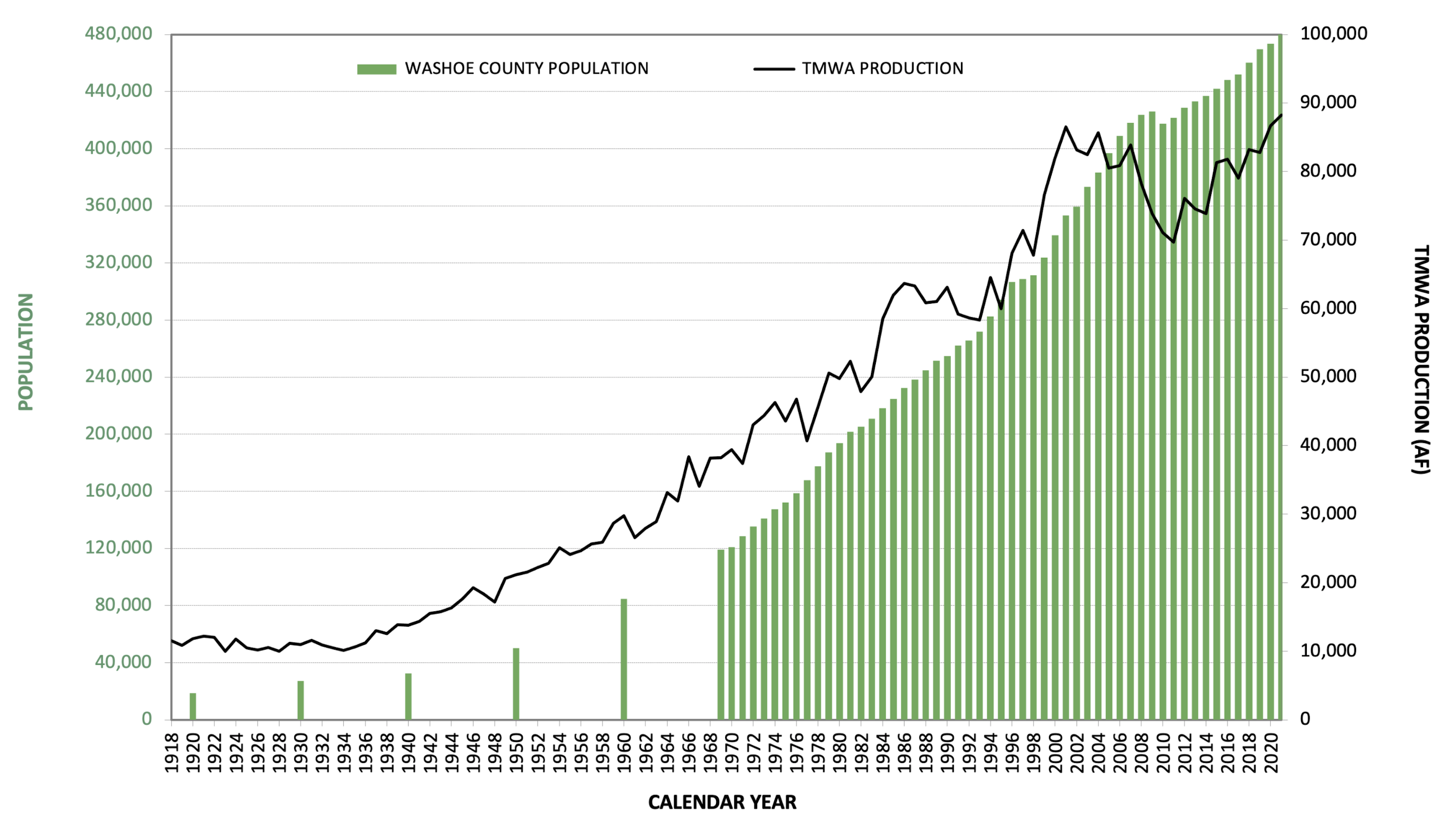
Need to know your watering days? Go to tmwa.com/adw
Exploring New Sources, Storage Options
In nature, all water is recycled. In our region, recycled water is in use at many parks, golf courses and public spaces. In collaboration with other community stakeholders, TMWA is actively exploring the expanded use of recycled water, which will stretch the supply of the region’s potable water sources out farther into the future.
This includes embracing advanced technologies and processes to purify recycled water to EPA drinking water standards. As a participant in a regional partnership called OneWater Nevada, TMWA is collaborating and managing pilot programs to develop A+ Advanced Purified Water for aquifer storage—ensuring a sustainable future supply. With oversight by the Nevada Department of Environmental Protection, OneWater Nevada has achieved ground-breaking success in pilot tests that can be viewed at onewaternevada.com.
Examining Climate Change
In Chapter 3 of TMWA’s 2020-2040 Water Resource Plan, multiple extreme drought and climate change scenarios are modeled with projected population growth to the end of this century. Under the most extreme historic drought scenarios this region has ever experienced, the plan essentially ‘stress tested’ how resilient our system is, and the results had no shortages projected over the next 80 years.
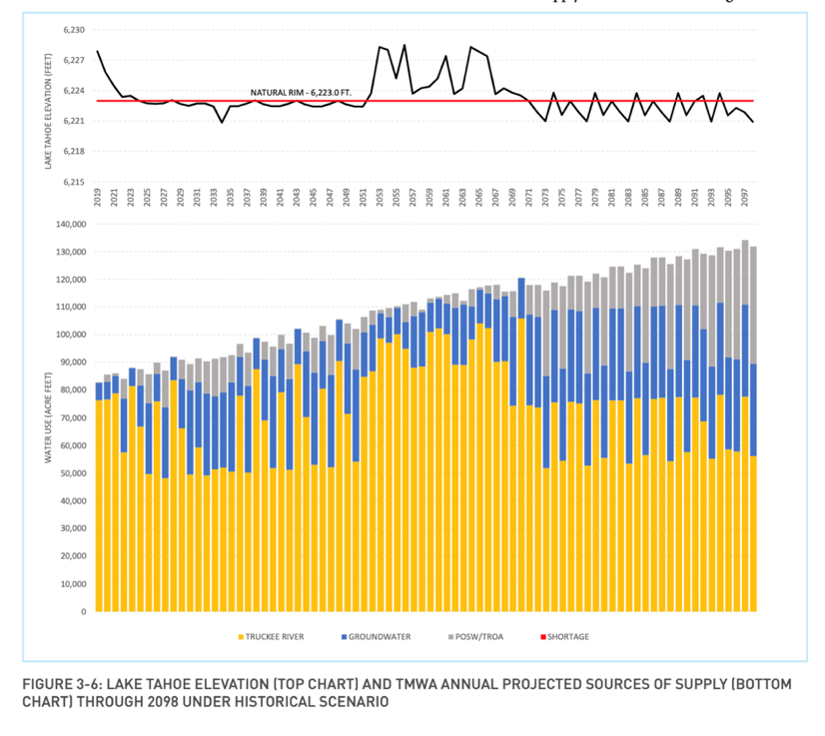
Finally, this American Society of Civil Engineers podcast provides an excellent review of how TMWA’s long-range planning accounts for localized climate science and extreme drought scenarios. Learn about this and what is in store to further the community’s drought resiliency into the coming decades, all in under 15 minutes:
